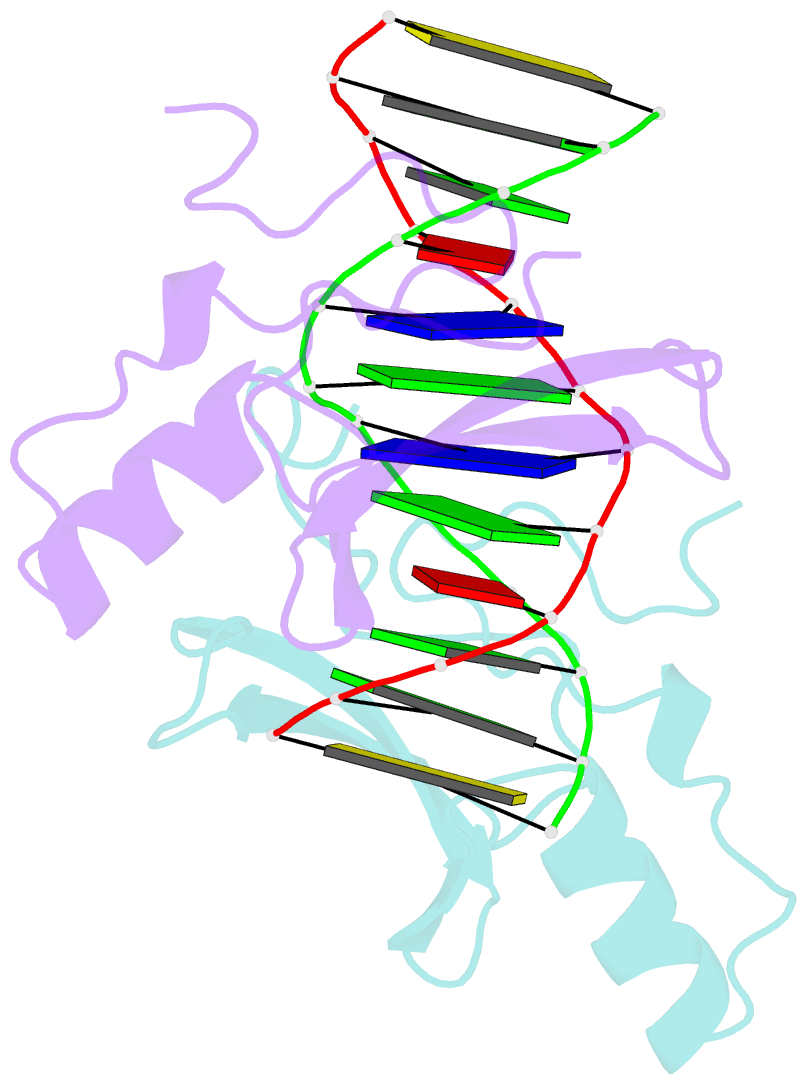Summary information and primary citation
- PDB-id
- 6ogj; SNAP-derived features in text and JSON formats;
DNAproDB
- Class
- DNA binding protein-DNA
- Method
- X-ray (1.8 Å)
- Summary
- Mecp2 mbd in complex with DNA
- Reference
- Lei M, Tempel W, Chen S, Liu K, Min J (2019): "Plasticity at the DNA recognition site of the MeCP2 mCG-binding domain." Biochim Biophys Acta Gene Regul Mech, 1862, 194409. doi: 10.1016/j.bbagrm.2019.194409.
- Abstract
- MeCP2 is an abundant protein, involved in transcriptional repression by binding to CG and non-CG methylated DNA. However, MeCP2 might also function as a transcription activator as MeCP2 is found bound to sparsely methylated promoters of actively expressed genes. Furthermore, Attachment Region Binding Protein (ARBP), the chicken ortholog of MeCP2, has been reported to bind to Matrix/scaffold attachment regions (MARs/SARs) DNA with an unmethylated 5'-CAC/GTG-3' consensus sequence. In our previous study, although we have systemically measured the binding abilities of MBDs to unmethylated CAC/GTG DNA and the complex structures reveal that the MBD2-MBD (MBD of MBD2) binds to the unmethylated CAC/GTG DNA by recognizing the complementary GTG trinucleotide, how the MeCP2-MBD (MBD of MeCP2) recognizes the unmethylated CAC/GTG DNA, especially the MARs DNA, is still unclear. In this study, we investigated the binding characteristics of MeCP2 in recognizing unmethylated 5'-CAC/GTG-3' motif containing DNA by binding and structural studies. We found that MeCP2-MBD binds to MARs DNA with a comparable binding affinity to mCG DNA, and the MeCP2-CAC/GTG complex structure revealed that MeCP2 residues R111 and R133 form base-specific interactions with the GTG motif. For comparison, we also determined crystal structures of the MeCP2-MBD bound to mCG and mCAC/GTG DNA, respectively. Together, these crystal structures illustrate the adaptability of the MeCP2-MBD toward the GTG motif as well as the mCG DNA, and also provide structural basis of a biological role of MeCP2 as a transcription activator and its disease implications in Rett syndrome.





